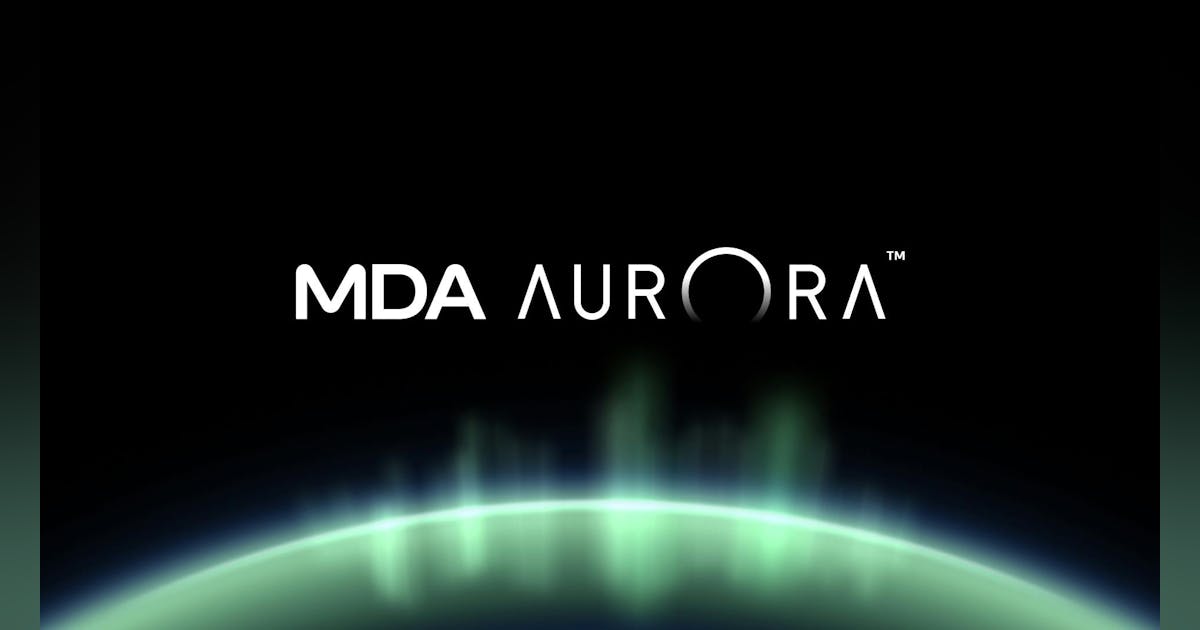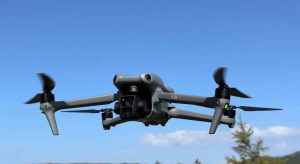MDA Space’s Ka-band Direct Radiating Array with Digital Beamforming: A New Era in Satellite Communications
Imagine a future where satellite internet is as fast, dynamic, and flexible as your home Wi-Fi—even while traveling, streaming, or running a global business. This future came one step closer when MDA Space successfully demonstrated its Ka-band Direct Radiating Array (DRA) with digital beamforming, powered by their breakthrough MDA AURORA™ technology. Here’s what this innovation entails, its significance, and how it could revolutionize global connectivity.
Breaking Down the Innovation
What’s a Direct Radiating Array (DRA)?
Think of DRAs as sophisticated flat-panel antennas comprised of numerous small, electronically controlled elements. Unlike traditional “dish” antennas, DRAs electronically direct their beams, eliminating the need for moving parts. They are ideal for the high-frequency Ka-band (26.5–40 GHz), which is valuable for transmitting extensive data.
What is Digital Beamforming?
Imagine a “smart” flashlight that can split its beam, steer it instantaneously to multiple spots. In radio terms, digital beamforming allows software to dynamically shape, steer, and multiply beams by individually managing each antenna element in real time. This digital over analog control offers:
- Multiple independent beams simultaneously
- Ultra-fast, adaptable steering
- Software-driven flexibility—“point wherever, whenever”
- Enhanced signal strength with reduced interference
What Did MDA Space Actually Achieve?
MDA Space became the first in the satellite industry to digitally form and electronically steer multiple Ka-band beams through direct sampling—doing away with traditional frequency conversions or bulky hardware. This milestone is part of their MDA AURORA™ product line aimed at next-gen, software-defined satellites.
Key capabilities:
- Simultaneous Multiple Beams: Cater to multiple markets, users, or missions concurrently.
- Full Electronic Steering: Beam direction changes in milliseconds without mechanical movement.
- Direct Sampling: Eliminates extra hardware, reducing costs, mass, and energy consumption.
- Scalability: Manages hundreds of elements and large-capacity spot beams—vital for broadband and 5G.
- Software-Defined Payload: Update, reassign, and optimize satellites with code instead of physical adjustments.
Why Does This Matter?
Satellite Communications: From Rigid to Agile
The old model had satellites rigidly configured to serve fixed regions with limited adaptability. If demand changed suddenly, such as during an emergency, adjustments were problematic.
The MDA Aurora™ DRA overturns this model by offering:
- Dynamic Allocation: Target beams in high-demand areas in real time.
- Massive Flexibility: Rapidly reconfigure coverage to support mobile networks, ships, airplanes, or emergency relief.
- Enhanced Efficiency: Lower launch weight, reduced power needs, and decrease in total ownership costs.
“The successful demonstration of our Ka-band DRA technology marks a crucial advancement towards enabling next-gen satellite broadband and 5G networks.” — MDA Space press release
Catalyzing 5G, Broadband, and Cloud Everywhere
With burgeoning online activity and 5G’s critical role in technologies from autonomous vehicles to telehealth, satellite constellations must rapidly scale up. Digital beamforming is essential for this growth:
- 5G Backhaul: Connect remote towers and devices with ultra-low-latency, high-speed links.
- Broadband to the Edge: Seamlessly serve rural, maritime, aviation, and disaster zones.
- Next-Gen Constellations: Efficiently network numerous satellites, smart and agile.
How Does Digital Beamforming Actually Work?
At its core, digital beamforming leverages advanced signal processing. Each antenna element is linked to a high-speed analog-to-digital converter (ADC). Software instantaneously calculates how to adjust the phase and amplitude of each signal, ensuring constructive interference where needed and canceling it out where it’s not desired.
- Multiple Beams: Each set of adjustments creates a new beam in a targeted direction.
- Minute Control: Precisely aim signals to specific regions, minimize interference, and swiftly adapt to changing demands.
- Direct Sampling: Instead of converting signals through multiple electronic layers, data passes directly through ADCs, simplifying design, cutting costs, and saving space and power.
Real-World Applications and Business Impact
For Satellite Operators
- Reduced CAPEX/OPEX: Fewer, lighter satellites deliver more capacity with less power.
- Faster ROI: Satellites launched with generic hardware can be retasked as requirements evolve.
- Future-Proof: Software updates enable new services without additional hardware.
For End-Users
- More Consistent Connectivity: Planes, ships, and remote workers experience better, faster service globally.
- Rapid Disaster Response: Swiftly reallocate beams to impacted regions during emergencies.
- 5G Integration: Provides true 5G connectivity everywhere, beyond city limits.
For MDA Space
- Market Growth: MDA’s revenue increased by nearly 50% over the past year, powered by their innovative approach, solidifying both technological and financial leadership.
- Industry Leadership: They’ve set a new benchmark for space-based digital payloads.
- Customer Trust: Major satellite operators increasingly consider MDA indispensable.
How Does This Compare With Other Technologies?
| Feature | Traditional Phased Array | Analog Beamforming | Digital Beamforming (Aurora™) |
|---|---|---|---|
| Beam Formation | Mechanical or analog | Analog phase shifters | Software-defined via direct sampling |
| Number of Beams | Limited | 1 (main), few side lobes | Many, fully independent beams |
| Steering Speed | Slow to moderate | Milliseconds | Sub-millisecond, near-instantaneous |
| Flexibility/Adaptability | Low | Moderate | Very High, updatable in flight |
| Power/Weight Efficiency | Moderate | Moderate | High—reduced mass and power |
| Scalability | Limited | Limited by analog complexity | Handles hundreds of elements easily |
| Costs (Over Lifecycle) | Higher | Moderate | Lower (fewer launches, longer life) |
Frequently Asked Questions
1. Why is Ka-band important?
Ka-band offers significantly more bandwidth compared to older C-/Ku-bands, making it ideal for applications demanding high data rates like video streaming, cloud backup, and 5G.
2. What’s “direct sampling” and why does it matter?
Direct sampling involves digitizing RF signals directly at the array, bypassing intermediate analog steps. This substantially reduces design complexity, making the technology lighter, more affordable, and more reliable.
3. How does this technology impact satellite launches?
With payloads that are lighter, more efficient, and more capable, each launch becomes exponentially more valuable. Fewer satellites are needed to do more, or smaller satellites can deliver greater performance.
4. Will this make my internet faster?
Yes, especially for users in rural, maritime, or constantly moving locations. Smart beams result in less congestion, targeted capacity, and fewer dropouts, bridging the digital divide and enabling comprehensive global coverage.
Expert Insight: The Human Side of Satellite Innovation
At MDA Space, advances are not the product of faceless machinery. Rather, they emerge from intense collaboration among engineers, physicists, software developers, and customer specialists. Every test, simulation, and in-orbit trial reflects their commitment to progress and their belief in democratizing global connectivity. Internally, it’s humorously noted that “Aurora beams are like the Force from Star Wars: invisible, but they make everything move faster and smarter.” The team draws inspiration from enabling disaster recovery teams, airlines, and remote schools to access the bandwidth they require thanks to MDA’s innovations.
Closing Thoughts: The Future is Software-Defined and Digitally Beamformed
MDA Space’s demonstration signifies more than just engineering achievement—it heralds a shift in our approach to space infrastructure. As satellites become as reprogrammable as smartphones, with “beams” as flexible as apps, the age of rigid, analog connectivity draws to a close. With this innovation, the vision of uninterrupted, high-speed data access—anywhere on Earth—is just a software update away.
If you are part of satellite operations, aerospace, telecom, or simply passionate about global connectivity’s future, keep track of MDA Space and digital beamforming. The real space race is about to become vastly more interesting and connected.













